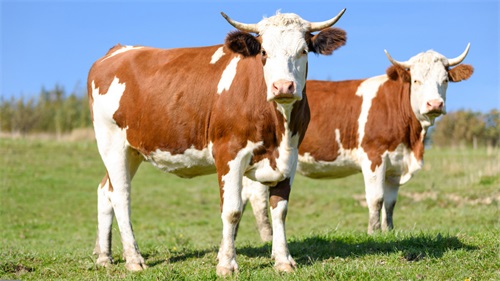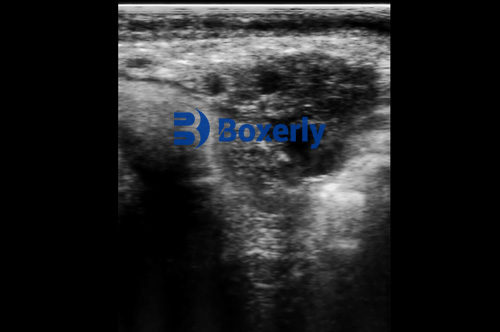Ultrasound technology is widely recognized for its role in human prenatal care, offering detailed images of unborn babies. However, its applications extend far beyond obstetrics. In veterinary medicine and animal agriculture, ultrasound has become a versatile diagnostic and therapeutic tool used across species—from livestock and equine to aquatic animals and exotic reptiles.

This article explores the broad spectrum of ultrasound applications, including its clinical functions, diagnostic benefits, and operational importance in veterinary and agricultural settings.
Comprehensive Organ Imaging
One of the most fundamental uses of ultrasound is to visualize internal organs in real time. Ultrasound provides high-resolution images of soft tissue structures, making it invaluable for assessing organ size, texture, blood flow, and pathology.
For example, in large animals such as cattle and pigs, ultrasound is frequently used to evaluate liver health. Fatty liver disease, abscesses, or parasitic lesions can be detected without the need for invasive surgery. Similarly, the kidneys, spleen, and intestines can be examined to identify inflammation, abnormal masses, or signs of obstruction.
Veterinarians also rely on ultrasound to assess the reproductive organs of both male and female animals. In breeding programs, this technology can be used to monitor follicular development, detect ovulation, and confirm pregnancies at an early stage—saving time and optimizing herd productivity.
Tumor Detection and Treatment Guidance
Ultrasound is frequently used to detect abnormal growths such as tumors or cysts in both domestic pets and farm animals. Unlike X-rays, which excel at showing bones, ultrasound is more effective for identifying soft-tissue masses and their characteristics, including shape, size, vascularity, and potential invasiveness.
In cases where a biopsy is required, ultrasound-guided fine-needle aspiration (FNA) enables precise needle placement, reducing trauma to the surrounding tissues and improving sample accuracy. This technique is particularly useful for targeting deep or irregularly shaped masses that are otherwise hard to localize.
Ultrasound can also be used therapeutically in some contexts. For example, high-frequency ultrasound has been studied for its potential in breaking up kidney stones or gallstones in animals. Although more common in human medicine, similar applications are being explored in veterinary care, especially where traditional surgical intervention may be too risky.

Support in Minimally Invasive Procedures
In surgical and clinical interventions, ultrasound provides real-time visualization that enhances procedural safety and precision. In the context of fat removal or abscess drainage, ultrasound waves are used in combination with cannulas to liquefy fat or purulent material, making extraction less invasive.
A growing application in animal care involves the use of ultrasound in regional anesthesia. By visualizing nerve structures and surrounding tissues, veterinarians can guide the injection of anesthetics more effectively, improving pain control and reducing complications.
Oral and Dental Care
Though less commonly discussed, ultrasound technology has made significant contributions to veterinary dentistry. Ultrasonic scalers use high-frequency vibrations to break apart tartar and remove plaque from the teeth of dogs, cats, and even exotic pets.
Some dental practitioners also use ultrasound to assess the integrity of tooth roots or detect lesions in the jawbone. This is especially helpful in identifying early-stage dental disease, which may not be visible through external examination alone.
Promoting Bone Healing
Ultrasound is also used to accelerate bone healing in animals. Low-intensity pulsed ultrasound (LIPUS) is a non-invasive technique that promotes bone regeneration by stimulating cellular activity in the injured area. This technique is particularly useful in fractures that are slow to heal or in young animals with growth plate injuries.
In equine medicine, for example, LIPUS has been used to assist in recovery from stress fractures and joint injuries in performance horses. The technology reduces recovery times and helps maintain athletic potential by restoring limb function more quickly.
Reproductive Monitoring and Obstetrics
Perhaps the most well-known veterinary application of ultrasound is in reproduction. Ultrasound is used extensively in livestock and equine medicine to monitor pregnancies, assess fetal development, and detect complications early.
In bovine reproductive programs, for example, veterinarians use ultrasound to:
Confirm pregnancy as early as 25–30 days post-insemination
Determine fetal viability
Detect multiple pregnancies or abnormalities
Estimate fetal age for calving predictions
In horses, ultrasound allows detailed monitoring of the mare’s uterus and ovaries, ensuring breeding is timed optimally and that any infections or cysts are identified before they affect fertility. The non-invasive nature of the procedure makes it ideal for repeated use throughout gestation.
Ultrasound in Exotic and Aquatic Species
The versatility of ultrasound extends to species where traditional imaging techniques fall short. Reptiles, amphibians, and aquatic animals like fish benefit from ultrasound for evaluating organ health, reproductive status, and internal injuries without the stress of surgical procedures.
For example, in large fish species used in aquaculture, ultrasound can determine the sex and spawning readiness of broodstock, which is crucial for hatchery success. In turtles and lizards, ultrasound helps assess egg development or detect internal obstructions.
Operational and Economic Advantages for Animal Farms
For animal farm operators, adopting ultrasound technology offers both medical and operational benefits. On-site diagnostic capabilities reduce the need for referrals and enable early intervention—preventing disease progression and minimizing animal loss.
The cost-effectiveness of ultrasound is especially notable. Unlike CT or MRI, ultrasound equipment is portable, affordable, and adaptable for use in field conditions. With proper training, even rural veterinarians can implement ultrasound as a frontline diagnostic tool.
Ultrasound also allows for better management decisions in breeding, culling, and herd health planning. For instance, identifying non-pregnant animals early allows for timely rebreeding, which directly impacts overall farm productivity.
Conclusion: A Powerful, Multifaceted Diagnostic Tool
Ultrasound technology is no longer limited to obstetric imaging—it has become a core tool across all facets of veterinary and livestock medicine. From imaging vital organs and detecting tumors to guiding minimally invasive procedures and promoting faster bone healing, its applications are as diverse as the species it serves.
As the technology becomes more accessible and affordable, more veterinarians and animal farm operators are adopting ultrasound into routine practice. Its ability to provide real-time, accurate, and non-invasive insights into animal health makes it an indispensable part of modern veterinary care.
By understanding and leveraging the various uses of ultrasound, animal health professionals can offer higher-quality care, reduce operational costs, and enhance the welfare and productivity of the animals under their stewardship.
References
Although the translated version did not provide citations, here are references used in similar professional articles for deeper exploration:
DeFrancesco T, Royal K. A survey of point-of-care ultrasound use in veterinary general practice. Education in the Health Professions. 2018;1(2): 50. https://doi.org/10.4103/ehp.ehp_21_18
Pelchat J, Chalhoub S, Boyson SR. The use of veterinary point-of-care ultrasound by veterinarians: A nationwide Canadian survey. Canadian Veterinary Journal. December 2020. https://www.ncbi.nlm.nih.gov/pmc/articles/PMC7659883/
Feliciano MAR, Uscategui RAR, Maronezi MC, et al. Ultrasonography methods for predicting malignancy in canine mammary tumors. PloS One. 2017; 12(5): e0178143. https://doi.org/10.1371/journal.pone.0178143
Kumar V, Kumar A, Varshney AC, et al. Diagnostic imaging of canine hepatobiliary affections: a review. Veterinary Medicine International. 2012. https://doi.org/10.1155/2012/672107
Pagani E, Tursi M, Lorenzi C, et al. Ultrasonographic features of adrenal gland lesions in dogs can aid in diagnosis. BMC Veterinary Research. 2016; 12(1): 267. https://doi.org/10.1186/s12917-016-0895-1
tags:
Text link:https://www.bxlultrasound.com/ns/800.html



